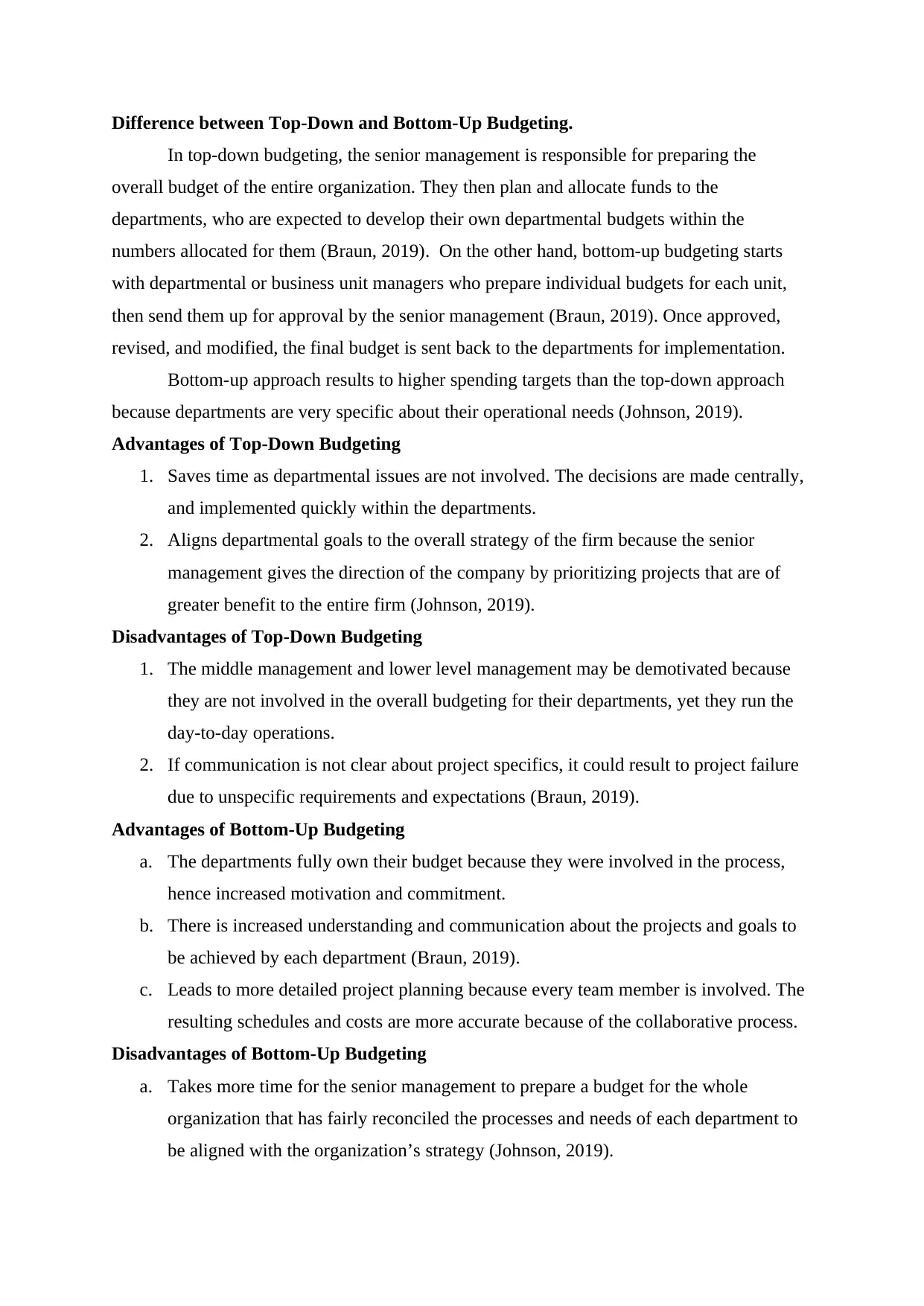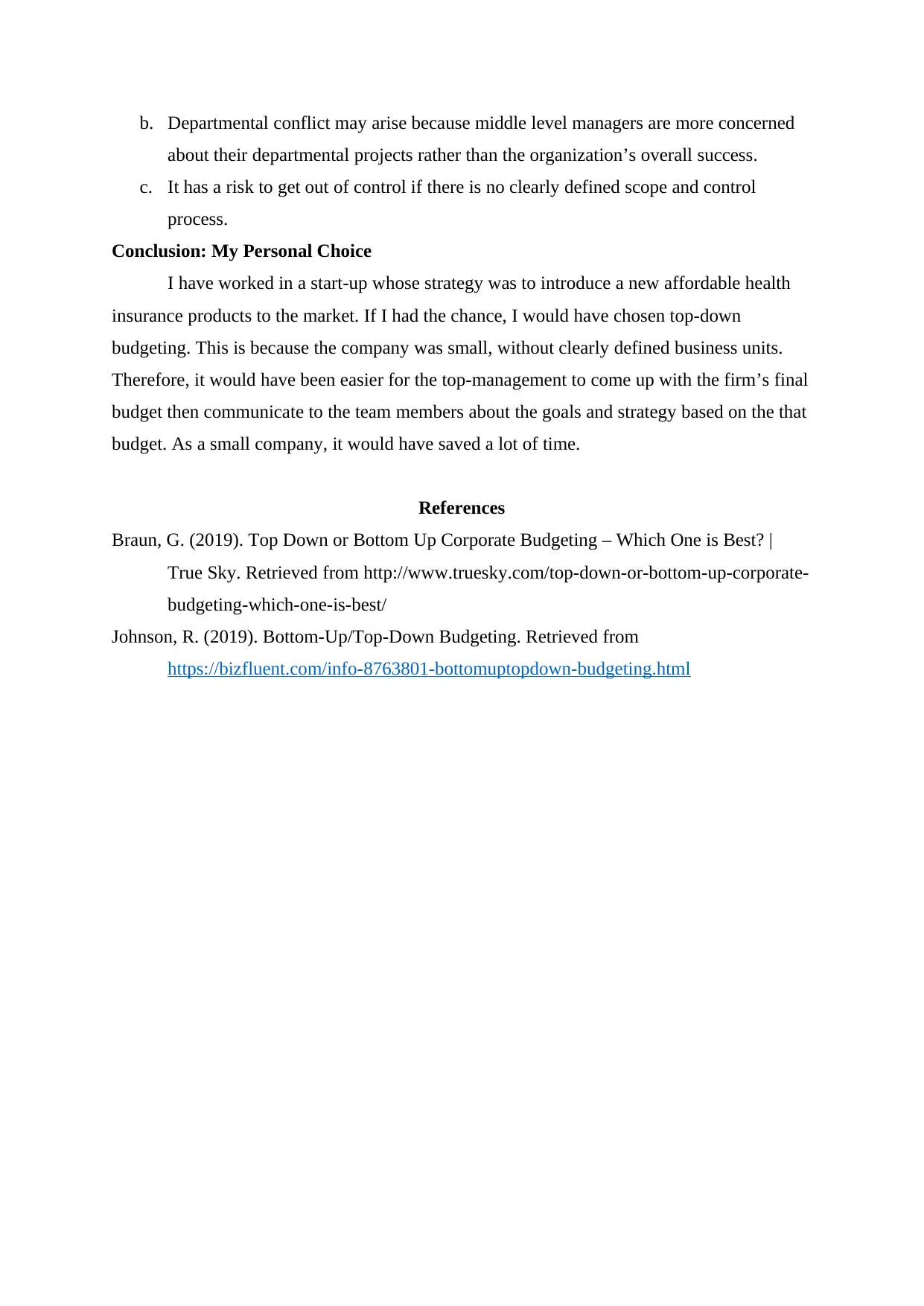An Analysis of Top-Down and Bottom-Up Budgeting for Financial Planning
VerifiedAdded on 2022/10/18
|2
|578
|15
Report
AI Summary
This report examines the contrasting approaches of top-down and bottom-up budgeting. It begins by defining each method: top-down budgeting, where senior management sets the budget and allocates funds, and bottom-up budgeting, where departmental managers create individual budgets. The report then details the advantages and disadvantages of each approach, including time-saving benefits and alignment with company strategy for top-down, and increased motivation and detailed planning for bottom-up. The report concludes with a personal choice based on a start-up scenario, advocating for top-down budgeting due to the company's size and lack of defined business units, emphasizing time efficiency. The report references key sources to support the analysis.
1 out of 2







![[object Object]](/_next/static/media/star-bottom.7253800d.svg)